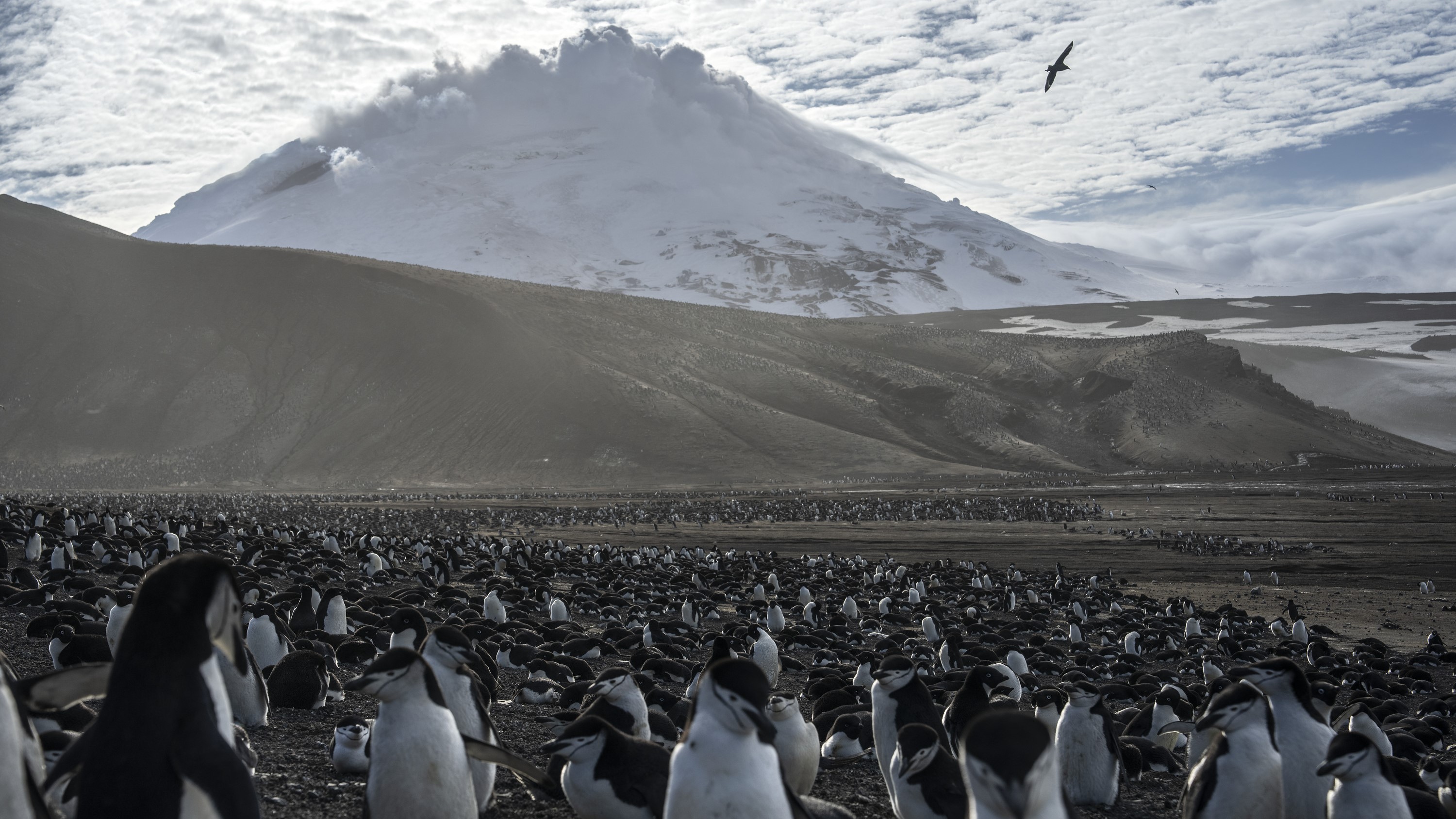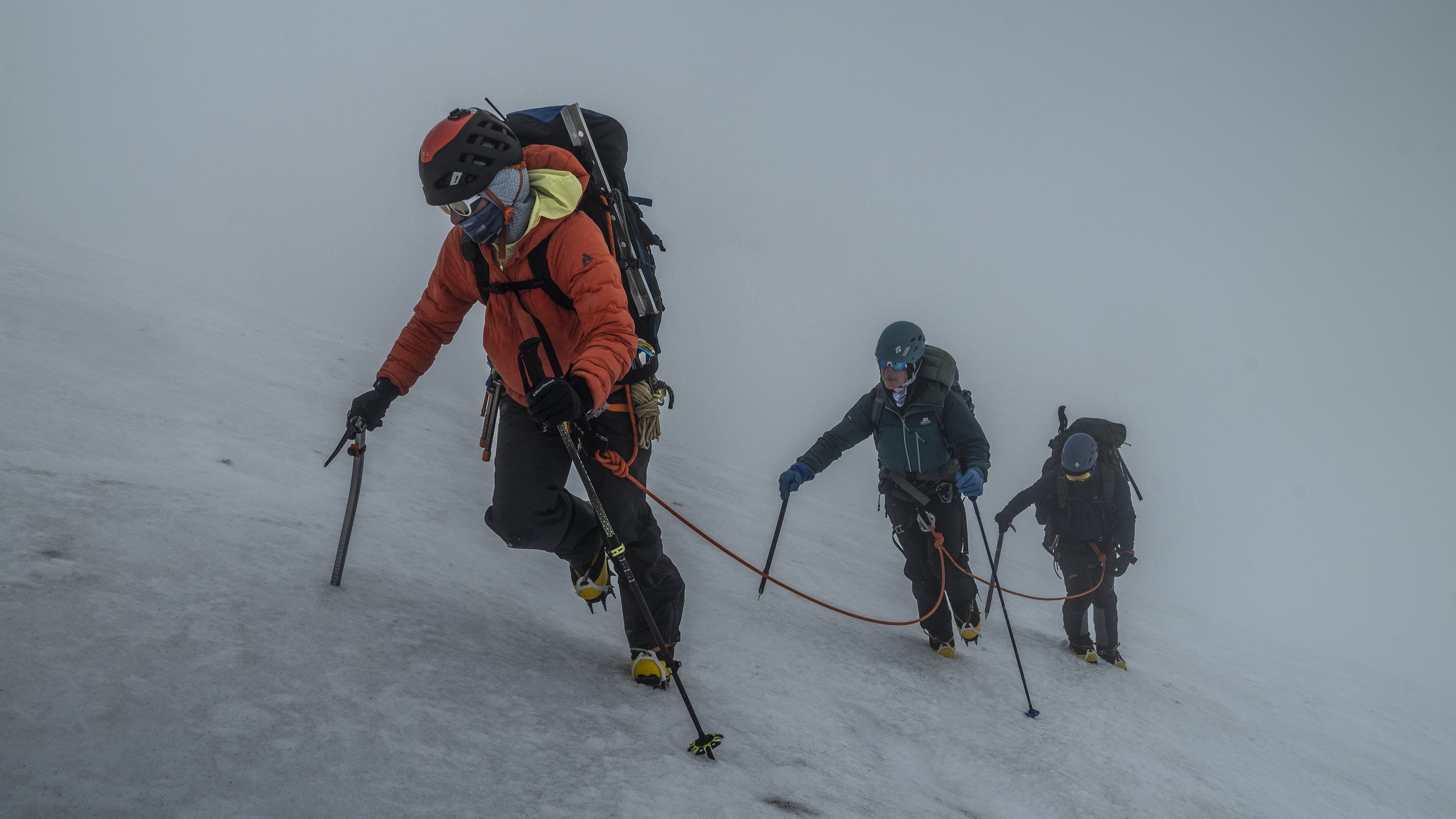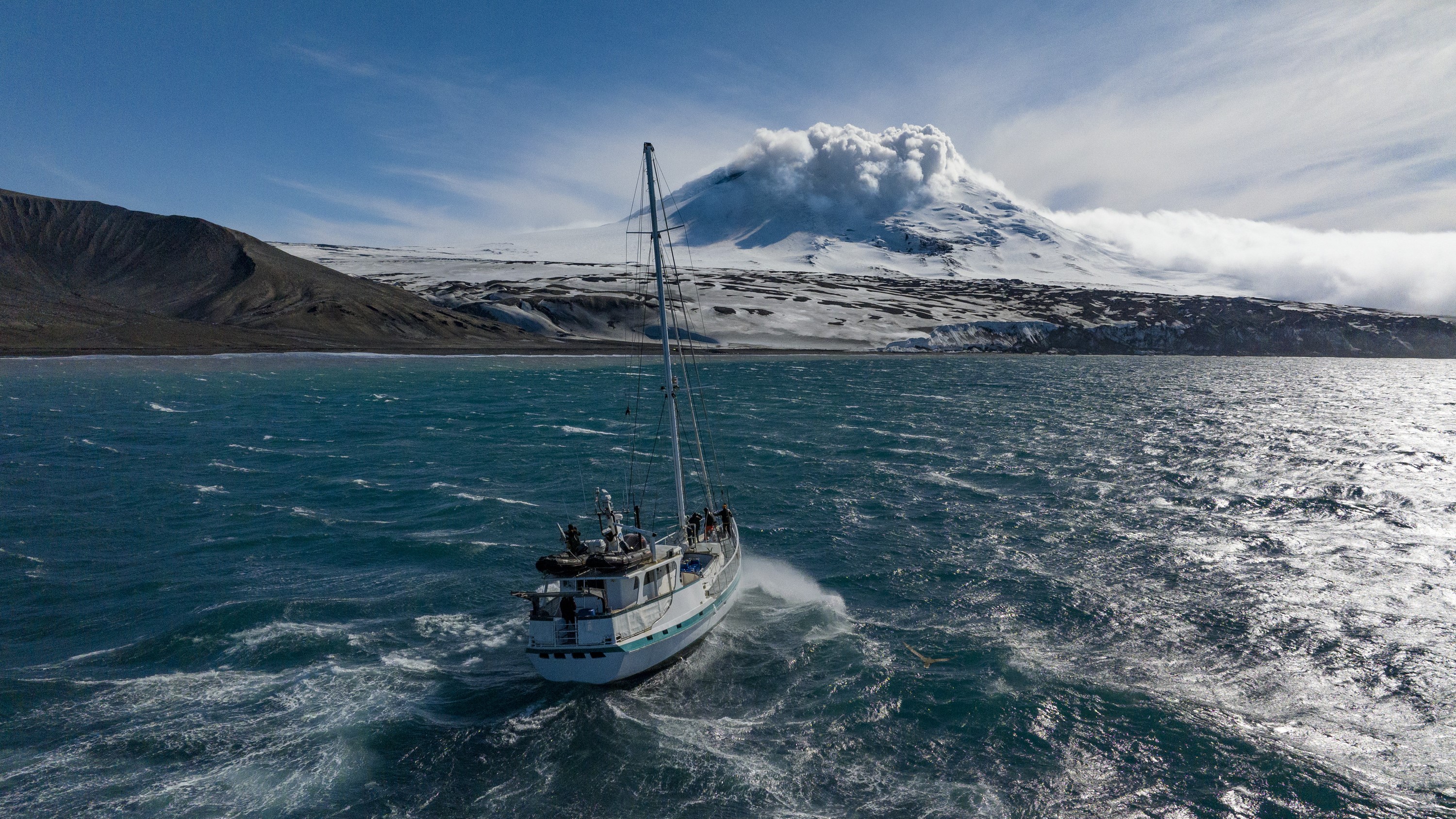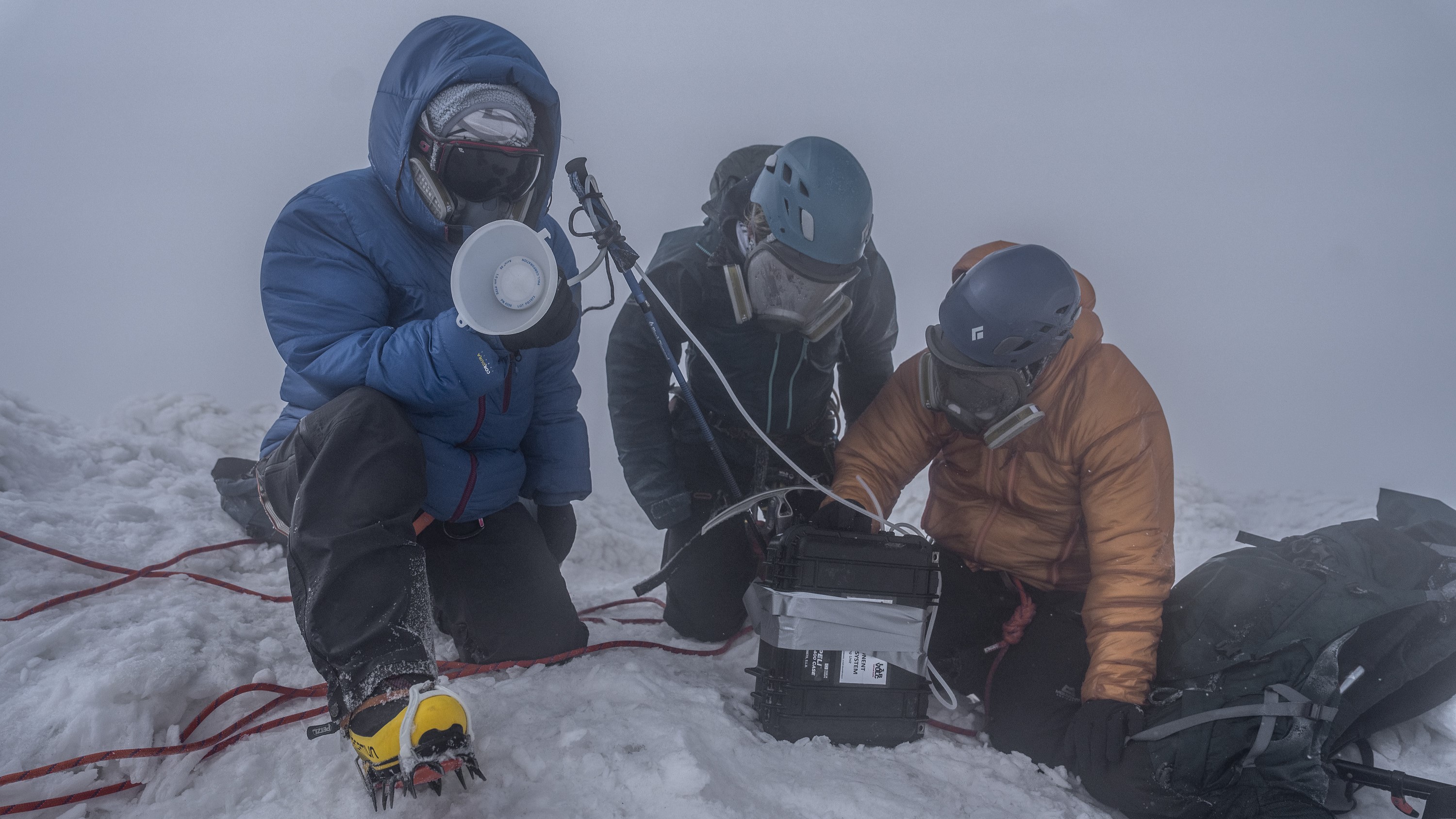Perilous expedition to uninhabited island in South Atlantic confirms existence of world's 8th lava lake
A new National Geographic "Explorer" episode follows an expedition to Saunders Island and the first documented ascent of Mount Michael, a volcano hosting the world's eighth lava lake.

In 2001, NASA satellites scanning an uninhabited island near Antarctica in the South Atlantic Ocean detected a thermal anomaly that left scientists reeling. Deep inside an unexplored volcano, they detected the signature of a bubbling lake of molten rock. Only seven such lava lakes were known worldwide.
With nothing but thermal data, however, volcanologists were unable to confirm the existence of a lava lake. Two decades later, they finally did it. In a brand-new "Explorer" episode premiering Thursday (Oct. 26), filmmakers followed scientists and mountaineers as they negotiated the first ascent of Mount Michael, a volcano on Saunders Island in the South Sandwich Islands, and confirmed it contained the lake.
"Lava lakes are one of the best natural laboratories that we have to study volcanic processes," Emma Nicholson, a volcanologist and associate professor in Earth sciences at University College London who went on the expedition, told Live Science. "Lava lakes are not permanent; they are geologically transient, so when we discover a new laboratory, we have to harness it as quickly as we can."
Related: The Fram: A Victorian expedition to the North Pole that was as brilliant as it was bonkers
Nicholson and a team of explorers first tried to reach the summit of Mount Michael in 2020, but poor weather conditions forced them to abandon the effort halfway through.

The successful ascent finally occurred in November 2022 and "was years in the making," Nicholson said. Besides getting a glimpse of the lava lake, the mission's objective was to collect data to improve models of volcanic activity.
Lava lakes enable scientists to "take the lid off" a volcano, Nicholson said. "Normally, all the process of how magma moves and releases gasses is hidden deep underground, and we basically have to interpret what we can measure at the surface," she said. But these processes are out in the open at lava lakes.
Sign up for the Live Science daily newsletter now
Get the world’s most fascinating discoveries delivered straight to your inbox.
From the moment the team set sail, they encountered a series of obstacles that threatened the success of the expedition. Navigating across the stormy Southern Ocean to Saunders Island was no small feat, Nicholson said, but they were rewarded with a spectacular view upon arrival.

"The way the wind wraps around the island creates a little oasis of calm within the ocean, so we sailed through this wall of cloud and suddenly the volcano opened up in front of us," she said. "It was the most magnificent moment."
The biggest challenge was the initial climb up Mount Michael, Nicholson said. "The cold had got into my bones, my legs were seizing up and I had a lot of pain in my ankles," she recalled. "I thought I'd be the reason why the team couldn't make it to the top and that was crushing."
The explorers eventually reached the summit, but visibility was too poor to make out the lake. On a second ascent, the team finally glimpsed Mount Michael's crater. "It was bigger and more vast than I could ever have imagined," Nicholson said.

At the bottom of the gaping hole, they found what is now officially the eighth known lava lake on Earth.
There are many reasons why lava lakes shouldn't exist, Nicholson said. "When lava is this close to the surface and it's exposed, it should crystallize and form a solid plug. Too much magma and too much pressure would trigger an eruption, so it's this absolute perfect balance."
The discovery will help scientists improve volcanology models and fine-tune measuring instruments, Nicholson said. "My golden goal is to go back at some point and install permanent monitoring stations that can then send data to us by satellite," she added.
"Explorer: Lake of Fire" premieres on National Geographic and will be available to stream on Disney+ on Friday (Oct. 27).

Sascha is a U.K.-based staff writer at Live Science. She holds a bachelor’s degree in biology from the University of Southampton in England and a master’s degree in science communication from Imperial College London. Her work has appeared in The Guardian and the health website Zoe. Besides writing, she enjoys playing tennis, bread-making and browsing second-hand shops for hidden gems.









